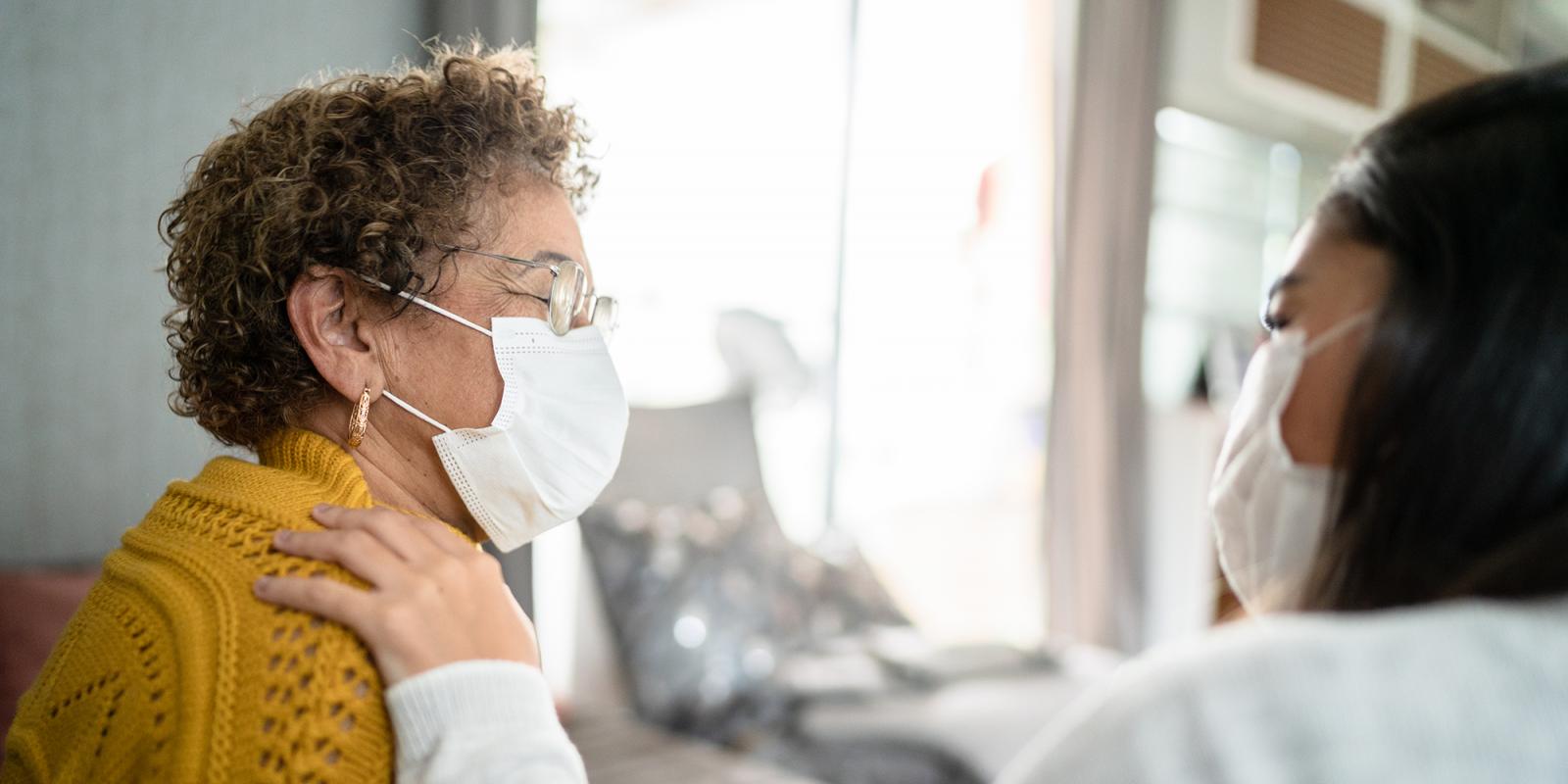Direct care workers who support older adults and people with disabilities across long-term care settings were finally recognized as “essential” during the COVID-19 pandemic.
Especially during the first waves of the pandemic, these workers struggled against the odds to prevent and mitigate outbreaks in nursing homes and other congregate settings. They provided a lifeline to individuals living at home, filling the gaps as other services and supports were scaled back. In the process, direct care workers risked their own health and lives, often without access to personal protective equipment, targeted training and other much-needed supports. Already struggling to get by on poverty-level wages, many had to reduce their hours or take time off to quarantine or to care for themselves, their children and other family members.
How Did States Respond?
PHI—the nation’s leading authority on the direct care workforce—recently released research on how states responded to the unprecedented pressures faced by direct care workers in the first 18 months of the COVID-19 pandemic. The research focuses on hazard pay and paid sick leave, two key policy levers for supporting workers’ health and economic stability.
The results were mixed. Twenty-four states and the District of Columbia offered some form of hazard pay and/or paid sick leave—with broad variation in the scope and impact of these policies, especially with regard to hazard pay—but 26 states did neither. Just 10 states implemented both types of policies.
Just 10 states implemented both hazard pay and paid sick leave.
To note, this doesn’t mean that those 26 states did not provide any enhanced support to this workforce. Most states passed some of their federal COVID-relief funds along to Medicaid providers, including long-term care providers—who in turn could use the funds to raise wages, offer paid sick leave, and more. But this approach did not guarantee that direct care workers benefited.
The findings of the PHI report—Essential Support: State Hazard Pay and Sick Leave Policies for Direct Care Workers During COVID-19—are disappointing overall, but with notable exceptions and lessons learned.
Hazard Pay: Better Than Nothing, But Not Enough
Only 17 states implemented any form of hazard pay for direct care workers—and in nearly every case, the policies were short term, modest in size and limited in reach.
Louisiana, for example, implemented a wage increase of about $2 per hour for direct care workers, but the policy was restricted to those providing home care through a single Medicaid waiver program to individuals who had been exposed to COVID-19. The wage increase lasted no more than 40 days per worker. In California, nursing home workers were the only segment of the direct care workforce to benefit from a statewide hazard pay policy—in the form of a one-time $500 bonus funded by Facebook.
Michigan offers an important counterpoint. In April 2020, the state raised wages by $2 per hour for direct care workers supporting consumers in Medicaid home- and community-based services (HCBS) programs. Over time, the policy was expanded to cover nursing homes, renewed and increased several times, and ultimately made permanent through the 2022 state budget—in recognition of the value of these workers during and after the pandemic.
Paid Sick Leave: Evidence of a Growing Trend
PHI’s research found that four states enacted new paid sick leave laws during COVID-19, joining 14 states that already had paid leave in place. Four of those 14 states made amendments or issued supplementary policies during the pandemic.
In contrast, 33 states offered no such coverage. (Some direct care workers were covered by the emergency paid sick leave provisions in the federal Families First Coronavirus Response Act, or FFCRA, but those provisions expired in December 2020.)
‘Four states enacted new paid sick leave laws during COVID-19, joining 14 states that already had paid leave in place.’
Like Michigan, New York provides a good example of translating a crisis response into a longer-term solution. In March 2020, the state introduced an emergency paid sick leave law to cover those who were exempted from the FFCRA—but then replaced this temporary coverage with permanent paid sick leave through the 2021 state budget.
Maryland is another positive outlier. The state has had paid sick leave in place since 2018 but, recognizing that essential workers require enhanced coverage in times of crisis, lawmakers passed the Maryland Essential Workers’ Protection Act in 2021. The law has not yet been funded but may help support direct care workers and other essential workers in future emergencies.
Where Do We Go from Here?
The report concludes with several lessons learned about how to improve direct care jobs and stabilize long-term care through state and federal policy, including:
- Promote equity by extending supportive policies across the full direct care workforce;
- Transform short-term investments into sustained job quality improvements;
- Develop a national compensation strategy to help states achieve livable and competitive wages for this workforce;
- Establish permanent paid sick leave coverage for all workers;
- Incorporate public health emergency clauses into paid sick leave laws, ideally with enhanced eligibility for essential workers;
- Create a paid care advocate to help direct care workers learn about and access their employment rights and benefits; and
- Evaluate the implementation of workforce policies to ensure they achieve their intended impact on individual workers, the workforce overall and the delivery of quality services.
PHI’s research on this topic was made possible by funding from the Ralph C. Wilson, Jr. Foundation.
Kezia Scales, PhD, is senior director of Policy Research at PHI. She is based in Durham, NC.













